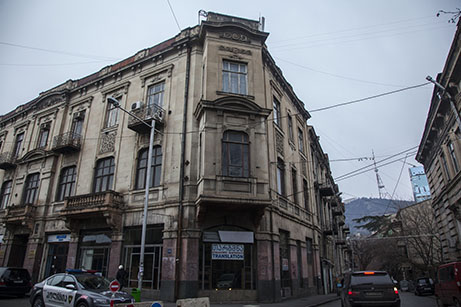100-year-old Tbilisi post office undergoes restoration

An iconic 100-year-old building in Tbilisi's Aghmashenebeli Ave is among the dozens of houses and buildings with historical importance being renovated within the New Tiflis project in Georgia's capital.
The three-storey building located at 44 Aghmashenebeli Ave was initially built as a residential house but was mostly recognised as its later role as a post office. However for the past several years the building has remained unoccupied.

The building initially served as residential house and later as a post office. Photo by N. Alavidze/Agenda.ge.
Approved for construction in February 1913, the house was commissioned by city trader David Yuzbashev and built based on a project by architect Alexander Ozerov. The architect earlier designed a 1905 building on today's Dadiani St that served as the Number 3 School for Girls.
The initial project for the Aghmashenebeli Ave building was created in December 1911, with its official paperwork now preserved at the National Archives of Georgia.

The building's roof still featured the Georgian title 'Postamti', meaning post office. Photo by N. Alavidze/Agenda.ge.
The building is currently being restored within the first stage of the New Tiflis project that aims to revitalise historic parts of the capital, boost the economy and develop tourism.
Within the initiative, more than 200 professionals including architects, historians, urbanists and art critics were working with the Government to develop an urban environment plan for Tbilisi so its 1.5 million residents and visitors can enjoy the cultural and diverse landscape.

A detail of the building's facade. Photo by N. Alavidze/Agenda.ge.
The New Tiflis project was due to be completed by the end of 2016.
Information about historic parts of Tbilisi as well as various documents and manuscripts illustrating cultural and social aspects of Georgia's history can be found on the official National Archives of Georgia website here.
 Tweet
Tweet  Share
Share